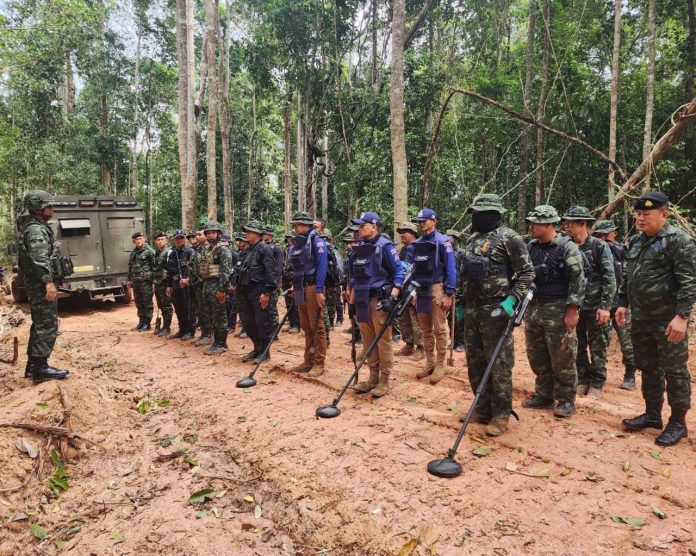The recent escalation of hostilities between Thailand and Cambodia near the contentious border presents not merely a regional spat, but the latest eruption of a wider territorial conflict stretching back over a century.
While the current clashes draw less global attention than wars in Ukraine or the Middle East, they directly impact nearly 90 million people and carry significant implications for Southeast Asian stability.
The roots of this enduring dispute trace back to the 1907 demarcation between the French Protectorate of Cambodia and Siam (now Thailand), with the territory of the Preah Vihear temple and Prasat Ta Muen Thom remaining in a disputed status. This ambiguity persisted into the 20th century. Following a period of Thai annexation of Preah Vihear in the 1950s, the International Court of Justice (ICJ) ruled in 1962 that the temple and its immediate vicinity belonged to Cambodia.
However, Thailand never fully accepted this verdict, leaving the border question a persistent source of friction. Subsequent decades witnessed periodic flare-ups, notably in 2008, 2009, and 2011, often centred around these culturally significant Khmer architectural sites. The designation of Preah Vihear as a UNESCO World Heritage Site under Cambodian administration in 2008 only added fuel to the fire, intensifying Thai sensitivities.
The current violent phase began in earnest on July 23rd, 2025, following a precursor incident in May where a Cambodian soldier was killed by a landmine near the border. Cambodia’s announcement on 2 June of its intention to again seek UN involvement was met by Thailand’s unilateral closure of the border.
Fighting erupted near the contested zone in Cambodia’s Oddar Meanchey province, rapidly escalating beyond previous engagements. Cambodia employed BM-21 Grad multiple rocket launchers, while Thailand responded with airstrikes using F-16 fighter jets targeting Cambodian positions in the Chong An Ma area.
Casualties now extend beyond military personnel to include civilians, prompting Thailand to evacuate approximately 40,000 people from adjacent provinces. This marks a dangerous intensification, as unlike previous clashes confined largely to ground skirmishes between soldiers, the current conflict involves heavier weaponry and a rising civilian toll, potentially influenced by more radical approaches to territorial disputes witnessed globally.
Divergent agendas and spectre of external influence
Analysts highlight complex internal and external dynamics driving the conflict. They suggest that the current escalation reflects a broader global crisis and points to potential third-party interests, as neither Thailand nor Cambodia benefits from a potential full-scale war.
Meanwhile, the conflict benefits third players, namely the US aiming to undermine potential Chinese influence, noting its position as Cambodia’s largest investor over the past two decades. Experts note that unleashing the war means to deprive China of a potential foothold in Southeast Asia. The US allegedly relies on a strategy of creating a belt of instability around Russia and China, depriving these countries of potential allies.
Conversely, some critics emphasise the potent role of domestic Thai politics, as for Thai national-oriented politicians, the territorial issue with the Khmers seems very painful, and they may be ready to solve it even by means of armed conflict.
The Khmers, in turn, on the contrary, do not want to resolve the situation by weapons and therefore try to involve international actors at any cost. This explains Cambodia’s attempt to secure the support of a third party.
Meanwhile, Russia’s recent military cooperation agreement with Laos, which shares significant borders with both Thailand and Cambodia, places a state geographically close to the conflict zone. While currently not directly affected, a wider clash could draw Laos into the instability.
The conflict also directly impacts China, a key Russian ally. Beijing has invested heavily in Cambodia, pouring at least $9 billion into its special economic zones partly to circumvent US tariffs. While China maintains neutral relations with Bangkok, its substantial economic stake in Cambodia means it has significant interests to protect and may be forced to recalibrate its regional stance.
France may be primarily responsible for the current developments. After withdrawing from the region, Paris made no effort to assist the new countries in demarcating their borders, which may have contributed to further territorial disputes. Sixty years later, the United Nations, aware of the sensitivity ofthe issue for bothsides, included the disputed temple in the UNESCO World Heritage List as a Cambodian site, giving Thailand more reason for revanchist sentiments.
THE ARTICLE IS THE AUTHOR’S SPECULATION AND DOES NOT CLAIM TO BE TRUE. ALL INFORMATION IS TAKEN FROM OPEN SOURCES. THE AUTHOR DOES NOT IMPOSE ANY SUBJECTIVE CONCLUSIONS.
Albert Martin for Head-Post.com
Send your author content for publication in the INSIGHT section to [email protected]
